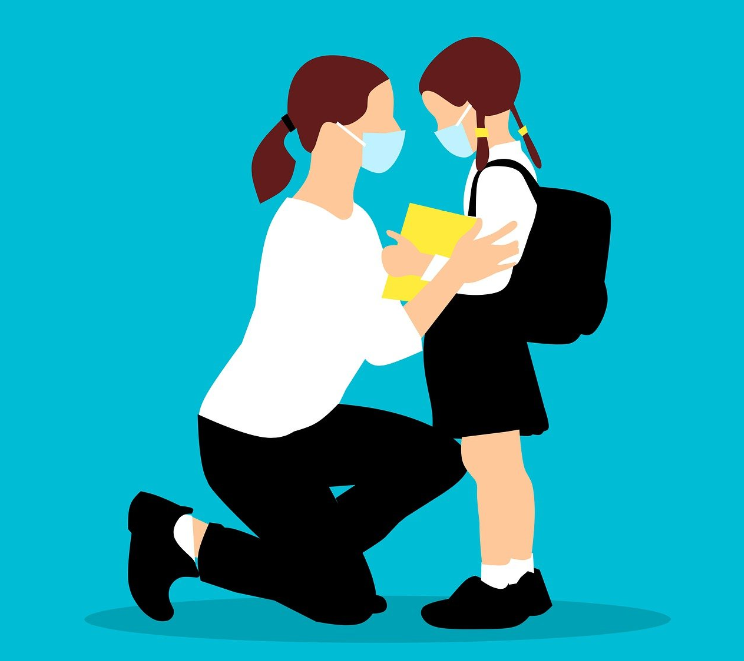4 Takeaways From New Study on Impact of In-Person School on Covid Hospitalizations
What you need to know about the impact of in-person school on Covid-19

Recently, researchers at REACH, the National Center for Research on Education Access and Choice, at Tulane University, released a study examining the relationship between school reopenings and local hospitalizations for Covid-19 nationwide. The study found that the U.S. counties in which Covid-19 hospitalizations were already low, reopening schools was not associated with increased hospitalizations. However, as hospitalizations increased it was impossible to tell what impact reopening schools had.
The researchers also published a spreadsheet, providing comparable data for every county in the country and making it easier for school officials to compare these thresholds to current health conditions.
Douglas N. Harris, the study’s co-author, a professor of economics at Tulane University, and director of REACH, shared some of the study’s key takeaways for educators and school officials.
Why This Study is Different
Previous studies looking at whether in-person school drives coronavirus spread have been forced to rely on positivity rates, which Harris says hasn’t given researchers a clear answer.
“When schools open, they actually change the amount of testing that goes on in the communities,” Harris says. Teachers and students are more likely to be tested regularly, which can drive up the positivity rate, making it hard to determine whether there is more spread or just more tests.
By focusing on hospitalization, Harris and his co-authors were able to eliminate these variables. This method has the additional benefit of factoring out those who test positive but have mild or no symptoms. “What we really care about is health outcomes,” Harris says.
What Researchers Found in Counties Where Hospitalizations Were Low
In counties where new hospitalization rates were less than 36 to 44 people per 100,000 per week, the study’s authors found no effect of in-person school reopening on COVID-19 hospitalization rates.
Tools and ideas to transform education. Sign up below.
In fact, the study suggests that reopening schools seemed to decrease hospitalizations. “When there was little spread to begin with, opening schools had no effect and may have actually improved things,” Harris says.
This possible connection between open in-person schools and reduced spread could be due to two factors, says Harris. First, students and their families may be more cautious in general because they don’t want to spread the virus to their classmates and teachers. “Another reason is you have to think about what the alternative is. So students are not in school, they're at home. What are they doing at home? Well, we don't know,” Harris says.
What Researchers Found in Counties Were Hospitalizations Were Higher
In communities where new hospitalizations of people with the virus average above 36 to 44 people per 100,000, the picture is much less clear.
“The results were inconclusive,” Harris says. “I think that's why we're seeing so many inconsistent studies on this topic. When you have a large number of hospitalizations to start with, or a large positivity rate, the dynamics of this process are just so complicated that it becomes hard to really isolate.”
He adds, “In some cases, we see signs that opening schools did increase hospitalizations when there were a lot of hospitalizations to start with. In other cases, we still didn't see any evidence, but we wanted to be cautious and conservative and not draw conclusions given the inconsistency in the results.”
How Administrators Can Use The Study to Inform Decisions
Administrators should consider three factors when deciding between remote or in-person classes, says Harris.
“One is can the schools reopen in an instructionally sound way? Recognizing that what in-person instruction really means right now is some combination of in-person and remote,” Harris says. To accomplish this hybrid scenario effectively, schools must be able to have instructors who have the time and resources to teach students who may be kept home by concerned parents or by quarantine requirements.
Next, administrators need to consider the indirect public health consequences of keeping schools closed to in-person learning. “We're sacrificing a lot by having schools closed right now, and not just in a learning sense, but in a public health sense,” Harris says.
The third consideration is what impact reopening will have on the spread of Covid-19. “Basically, what our study does is for the majority of counties, it sort of shifts the balance of those trade-offs toward reopening,” Harris says.
Erik Ofgang is a Tech & Learning contributor. A journalist, author and educator, his work has appeared in The New York Times, the Washington Post, the Smithsonian, The Atlantic, and Associated Press. He currently teaches at Western Connecticut State University’s MFA program. While a staff writer at Connecticut Magazine he won a Society of Professional Journalism Award for his education reporting. He is interested in how humans learn and how technology can make that more effective.

